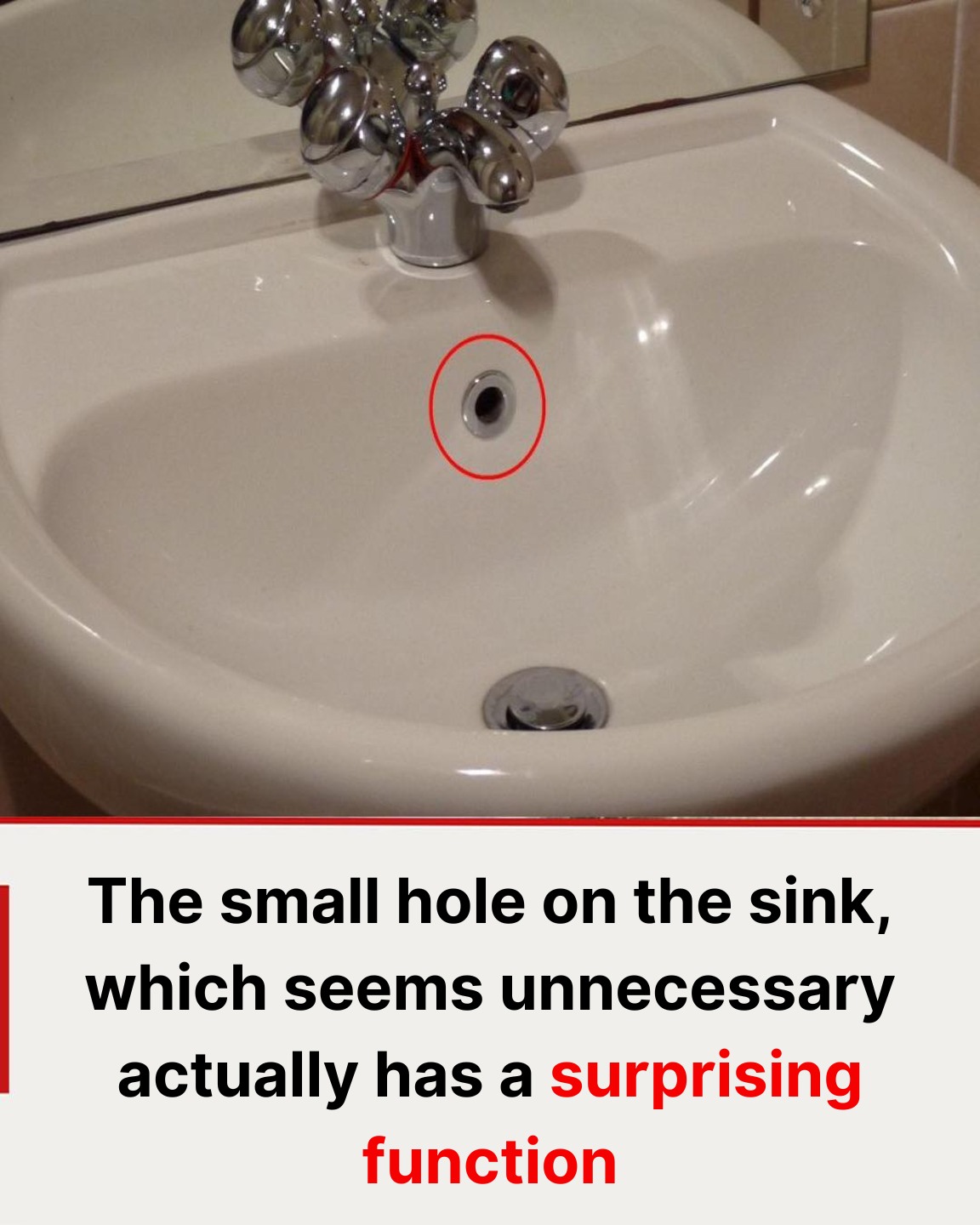Have you ever noticed the small hole near the top of your bathroom sink and wondered what it’s for? At first glance, it might seem like an insignificant design detail, but this tiny opening—known as an overflow hole—plays a crucial role in keeping your sink functional and your bathroom protected from potential water damage. While it’s often overlooked, understanding its purpose, drawbacks, and how to maintain it can save you from costly repairs and unpleasant odors.

What Is the Overflow Hole and Why Is It Important?
The overflow hole is typically located near the top of the sink basin, about one-third of the way down from the rim. Though small, it serves two essential purposes: preventing overflows and improving drainage efficiency.
Preventing Overflows:
Imagine you left the faucet running by accident while stepping away for a phone call. Instead of water spilling over the sink and flooding your bathroom, the overflow hole acts as a safety net. It redirects excess water back into the drainpipe, preventing potential water damage, mold growth, and expensive repairs.
Improving Drainage Efficiency:
The overflow hole also plays a subtle but important role in how efficiently your sink drains. It allows air to circulate through the drainage system, which helps maintain proper water flow. Without this added airflow, you might notice slow drainage or bubbling sounds coming from your sink.
In short, this tiny hole is an unsung hero in your bathroom sink’s design.
The Hidden Downside of the Overflow Hole
Despite its usefulness, the overflow hole has a significant downside: it’s a magnet for grime, bacteria, and mold. Because water splashes into it without fully rinsing it clean, soap scum, toothpaste residue, and other bathroom products can accumulate over time.
This dark, damp environment becomes the perfect breeding ground for bacteria and odor-causing mold. If your sink has an unpleasant smell that persists despite cleaning the basin and drain, the overflow hole is likely the culprit.
The problem? Most people forget about it entirely during routine cleaning. But don’t worry—cleaning it isn’t as difficult as it sounds.
How to Clean the Overflow Hole
With a few common household items, you can eliminate grime, bacteria, and bad odors from your sink’s overflow hole. Here’s a step-by-step guide:
Step 1: Create a Cleaning Mixture
Mix equal parts white vinegar and baking soda in a small container. This combination creates a natural, powerful cleaning agent that breaks down buildup, kills bacteria, and neutralizes odors.
Step 2: Pour the Mixture into the Overflow Hole
Slowly pour the vinegar and baking soda mixture into the overflow hole. You’ll notice fizzing and bubbling as the mixture works to dissolve residue.
Step 3: Let It Sit
Allow the cleaning mixture to sit in the overflow hole for about 5–10 minutes. This gives it time to break down grime and disinfect the area.
Step 4: Rinse with Warm Water
Carefully flush the overflow hole with warm water. You can use a funnel or a squeeze bottle to direct the water into the hole more effectively.
Step 5: Repeat if Necessary
If odors persist or the hole still looks dirty, repeat the process until it’s completely clean.
Tips for Maintaining a Clean Overflow Hole
To keep your overflow hole fresh and functional, regular maintenance is key. Here are a few easy tips:
- Clean Regularly: Aim to clean the overflow hole at least once a month to prevent buildup.
- Inspect for Clogs: Check both the overflow hole and the main drain for any signs of slow drainage or blockages.
- Use Natural Cleaners: Stick to gentle, natural cleaners like vinegar and baking soda. Harsh chemical cleaners can damage your pipes over time.
- Daily Wipe-Downs: A quick daily wipe of your sink basin can prevent soap scum and toothpaste residue from accumulating in the overflow hole.
Why This Tiny Hole Deserves Your Attention
Despite its small size, the overflow hole is a vital feature in your bathroom sink. It prevents flooding, promotes efficient drainage, and keeps your bathroom functioning smoothly. However, neglecting it can lead to persistent odors, mold growth, and even plumbing issues.
The good news? A little attention goes a long way. Regular maintenance and occasional deep cleaning are all it takes to keep this often-ignored feature in top shape.
A Small Detail with a Big Impact
Next time you glance at the small hole near your sink’s faucet, remember that it’s not just a random design feature—it’s an essential component that keeps your bathroom safe and functional. While it doesn’t demand much of your attention, giving it a little care will ensure your sink stays fresh, odor-free, and efficient.
Take a few minutes today to inspect and clean your sink’s overflow hole. It’s a small effort that can prevent big problems down the road. And the next time someone asks, “What’s that little hole in the sink for?”—you’ll have the perfect answer.





